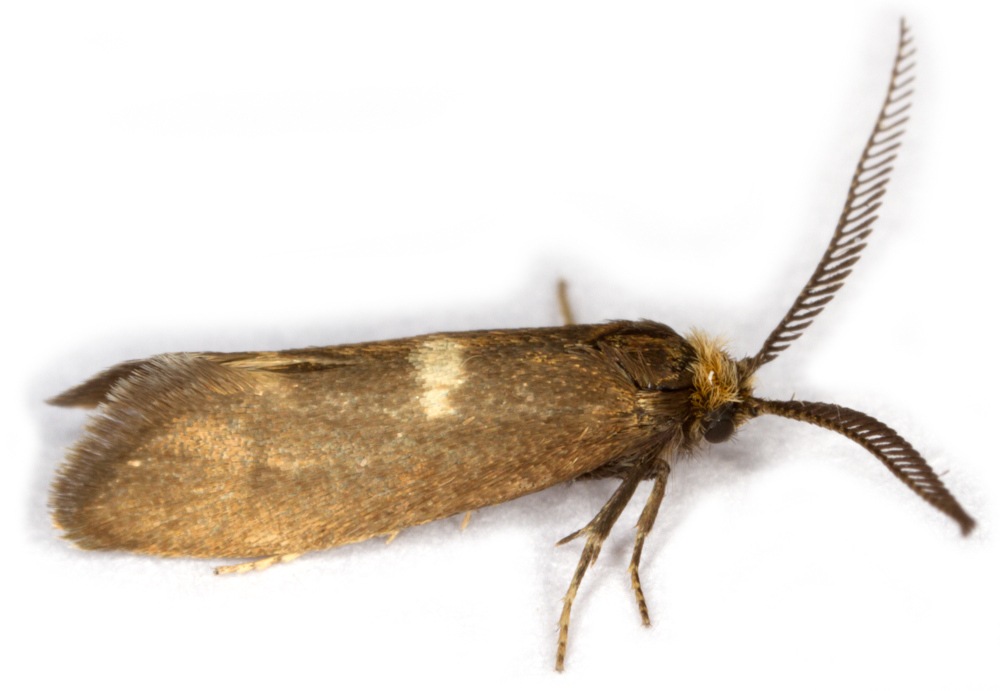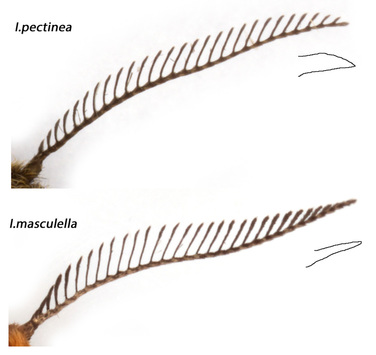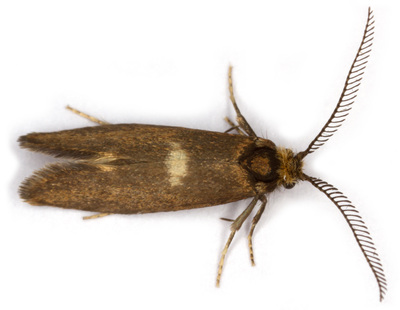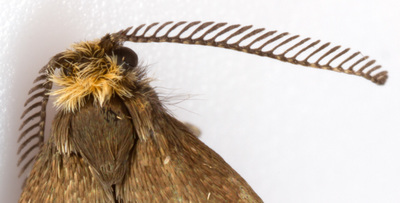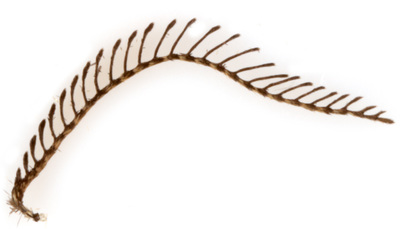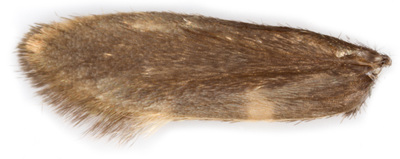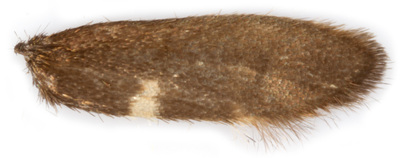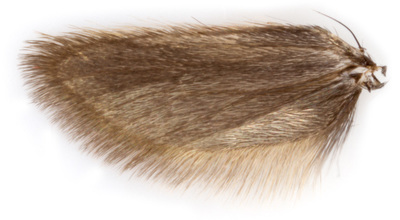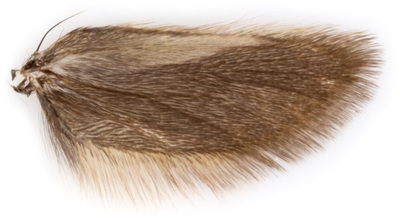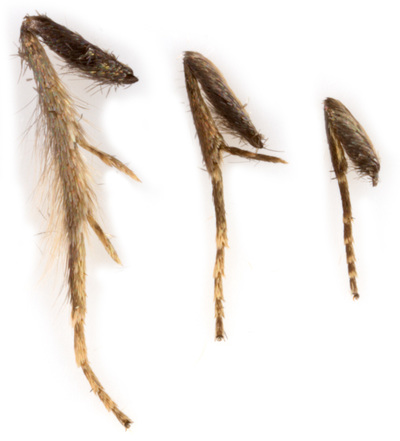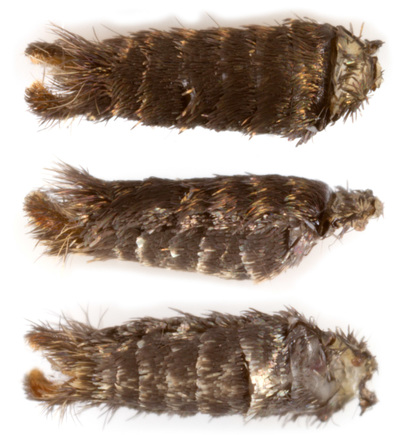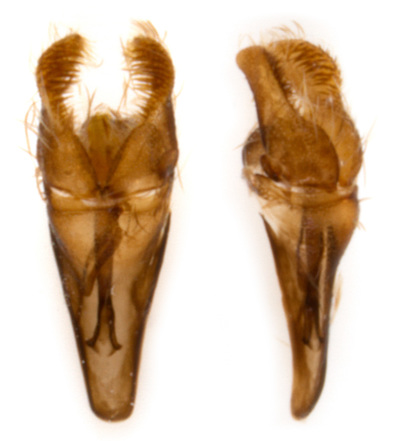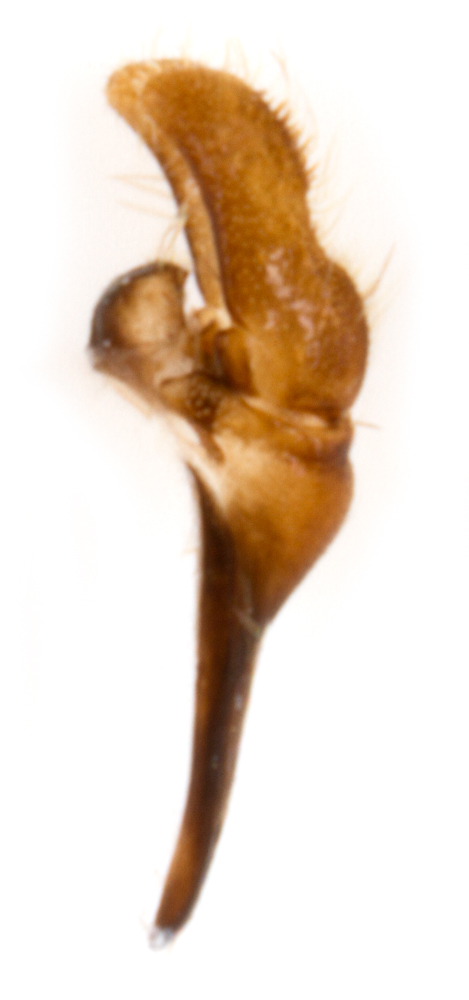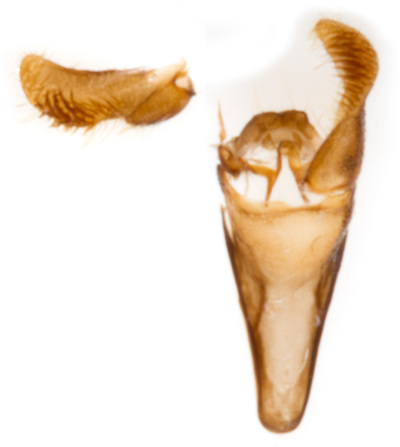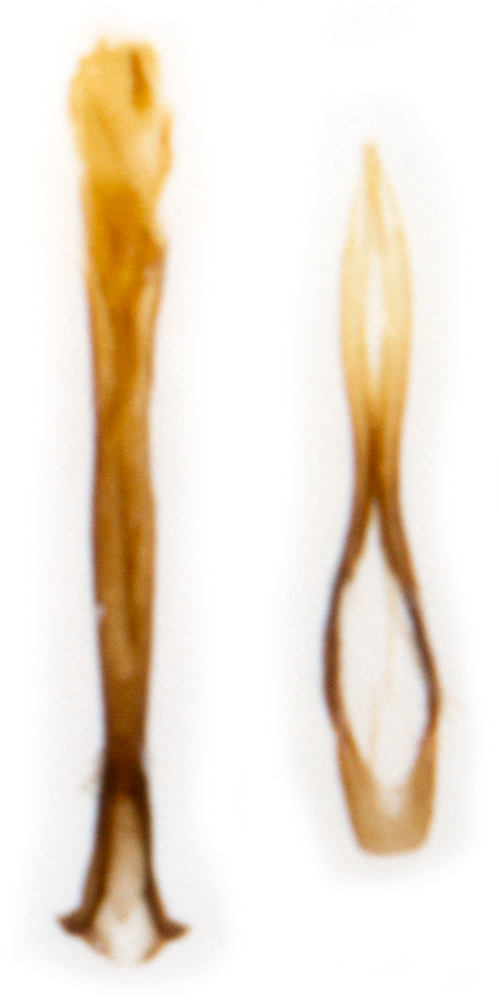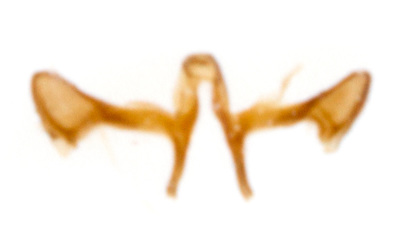ws: 12-16mm; Apr-May; silver/downy birch (Betula pendula/pubescens), Hazel (Corylus avellana) leaf-mine May-Jun; throughout UK, more common further North
|
ID: Males of I.pectinea and I.masculella differ from other Incurvaria species in having pectinate antennae. I.masculella has a more distinctly orange-yellow head and more distinct white spots on a darker browner forewing. In I.pectinea the dorsal pale spots are more obscure and the forewing a greyer-brown. There is also a difference in the tapering of the antennal pectinations, the tapering occurring more gradually in I.masculella (illustrated right). In these examples at least there is also a difference in the number of pectinations, 27 in I.pectinea, 30 in I.masculella, but I do not know if this is variable or if so the range of variability. Also in my specimens in I masculella there is a greater contrast between the dark dorsal surface and pale ventral surface of the abdomen, the pale colour being restricted to the distal fringe of each segment in I.pectinea - but this difference needs to be confirmed.
|
Male genitalia: all British species of incurvaria are shown but not described at Dissection Group. In comparing I.pectinea with I.masculella the following features provide separation between these species, features for I.pectinea given first:
1) saccus distinctly longer than valva (~x1.3) vs saccus shorter than valva (~x0.8)
2) valva twisted in its long axis vs more or less flat
3) apex of valva smoothly curved on the ventral margin so that the valva lacks a distinct lateral margin vs valval apex with a distinct lateral margin at ~90 deg to the ventral margin.
4) base of aedeagus with a pair of angular projections vs without
5) base of paramere squarely truncate and without angular projections vs pointed and with angular projections
1) saccus distinctly longer than valva (~x1.3) vs saccus shorter than valva (~x0.8)
2) valva twisted in its long axis vs more or less flat
3) apex of valva smoothly curved on the ventral margin so that the valva lacks a distinct lateral margin vs valval apex with a distinct lateral margin at ~90 deg to the ventral margin.
4) base of aedeagus with a pair of angular projections vs without
5) base of paramere squarely truncate and without angular projections vs pointed and with angular projections
§1 Hockley Woods, Essex; 14/04/2015; male
All images © Chris Lewis
All images © Chris Lewis
Page published 19/04/2015 (§1)
